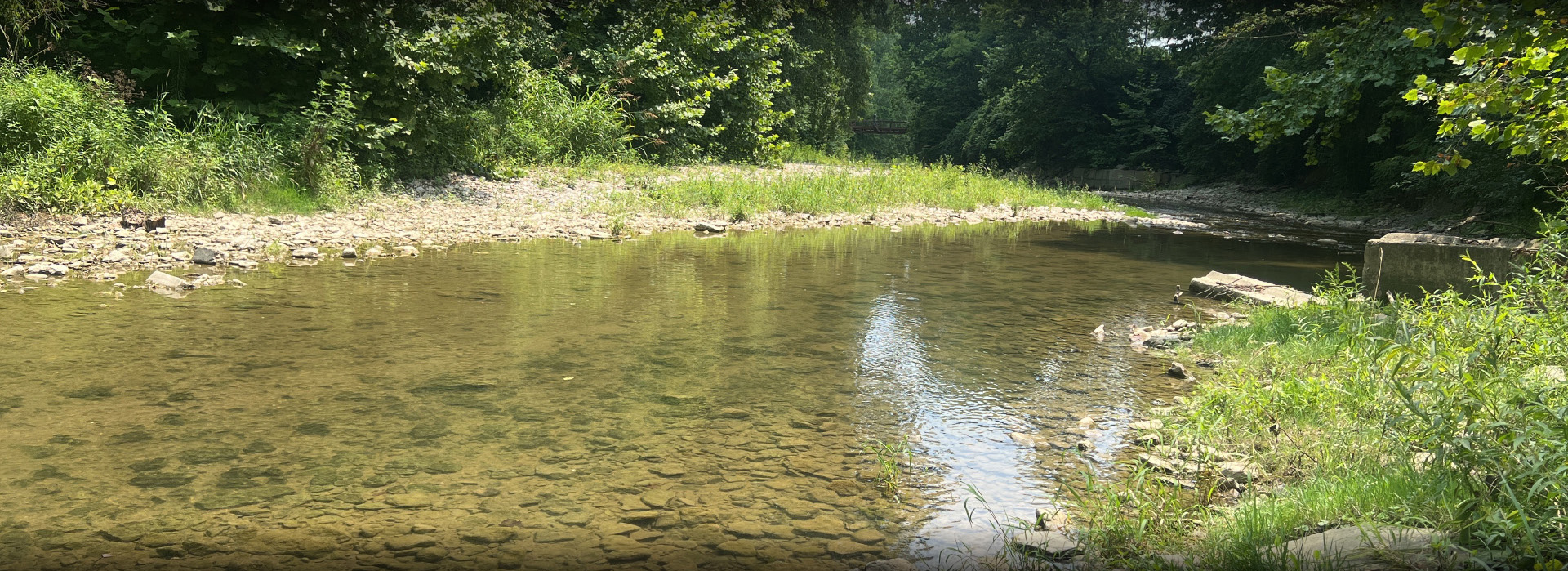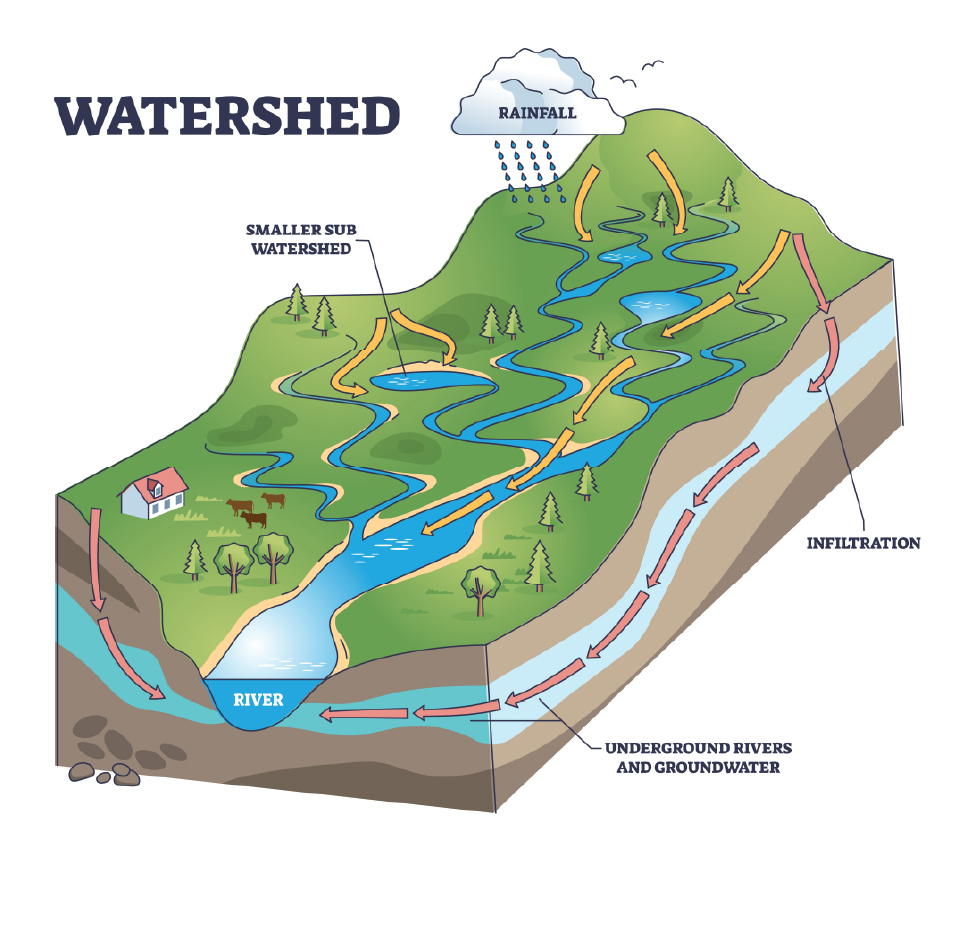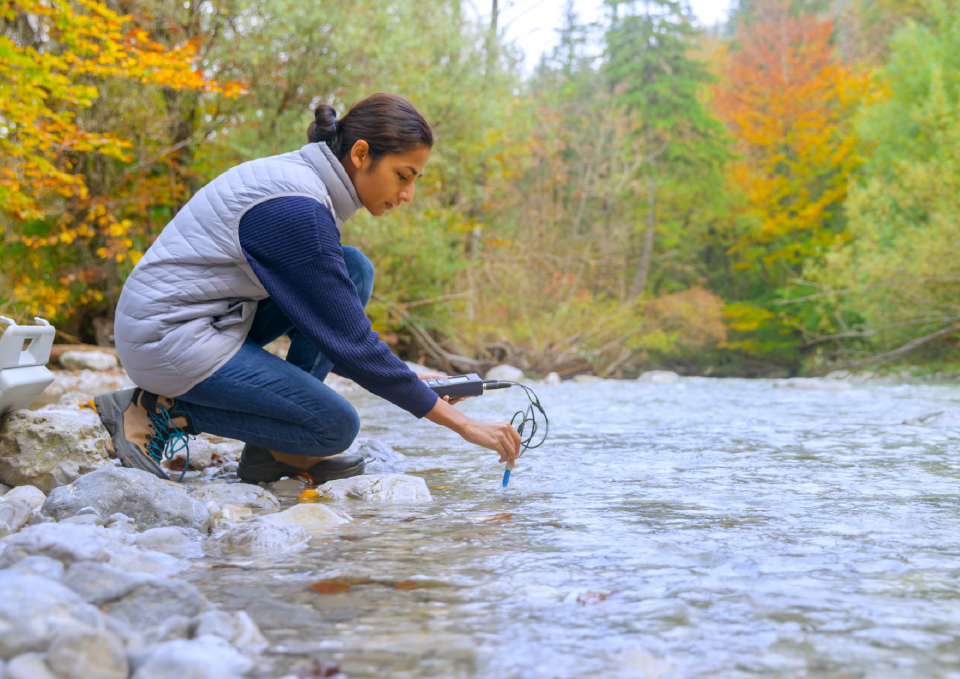

9-Element Nonpoint Source Implementation Strategies
When we protect land, we protect one of our most precious natural resources: clean water. Forests, wetlands, prairies, and undeveloped landscapes act as natural filters—capturing rain, absorbing pollutants, and replenishing the groundwater that feeds our streams, rivers, and lakes.
By conserving key parcels of land—especially those near waterways, wetlands, or in recharge zones—we ensure that our water stays clean, safe, and plentiful for generations to come.
Nonpoint source (NPS) pollution remains one of the leading causes of water quality degradation in the United States. Unlike pollution from a single, identifiable source, NPS pollution comes from a variety of sources such as agricultural runoff, stormwater, and urban development.
To support effective, strategic restoration, the U.S. Environmental Protection Agency (EPA) encourages the development of 9-Element Nonpoint Source Implementation Strategies. These plans are a critical pathway to securing funding, building partnerships, and achieving measurable improvements in water quality.
These plans serve as blueprints for restoring and protecting water quality. They offer a structured, science-based approach that encourages community-driven solutions.
Each NPS-IS is unique at the HUC-12 Watershed Assessment Unit (WAU) scale. The NPS-IS is intended to adapt over time as projects are added or removed. Each revised version—including new projects, updated data, or modifications to critical areas, goals, and objectives—must be reviewed and approved by the Ohio EPA.

Approved 9-Element NPS-IS within TVCT's Service Area
Each of the following components is essential to a comprehensive watershed-based plan:
Clearly identify the sources and causes of NPS pollution within the watershed.
Estimate pollutant load reductions expected from management measures.
Describe the practices and activities that will be implemented to reduce pollutant loads.
Outline the resources (technical and financial) needed to implement the plan, including potential funding sources.
Provide a strategy to inform and involve stakeholders and the public in the implementation process.
Include a timeline that shows when management measures will be implemented.
Set interim milestones to measure progress toward implementation goals.
Establish measurable criteria to evaluate improvements in water quality and implementation success.
Develop a monitoring component to assess the effectiveness of the plan over time.
9-Element plans are powerful tools for change. By leading or contributing to a plan, Three Valley can:

Developing a 9-Element NPS-IS plan requires strong collaboration amongst partners to ensure practical, locally driven strategies for improving water quality. We are honored to collaborate with our trusted partners to protect clean water.